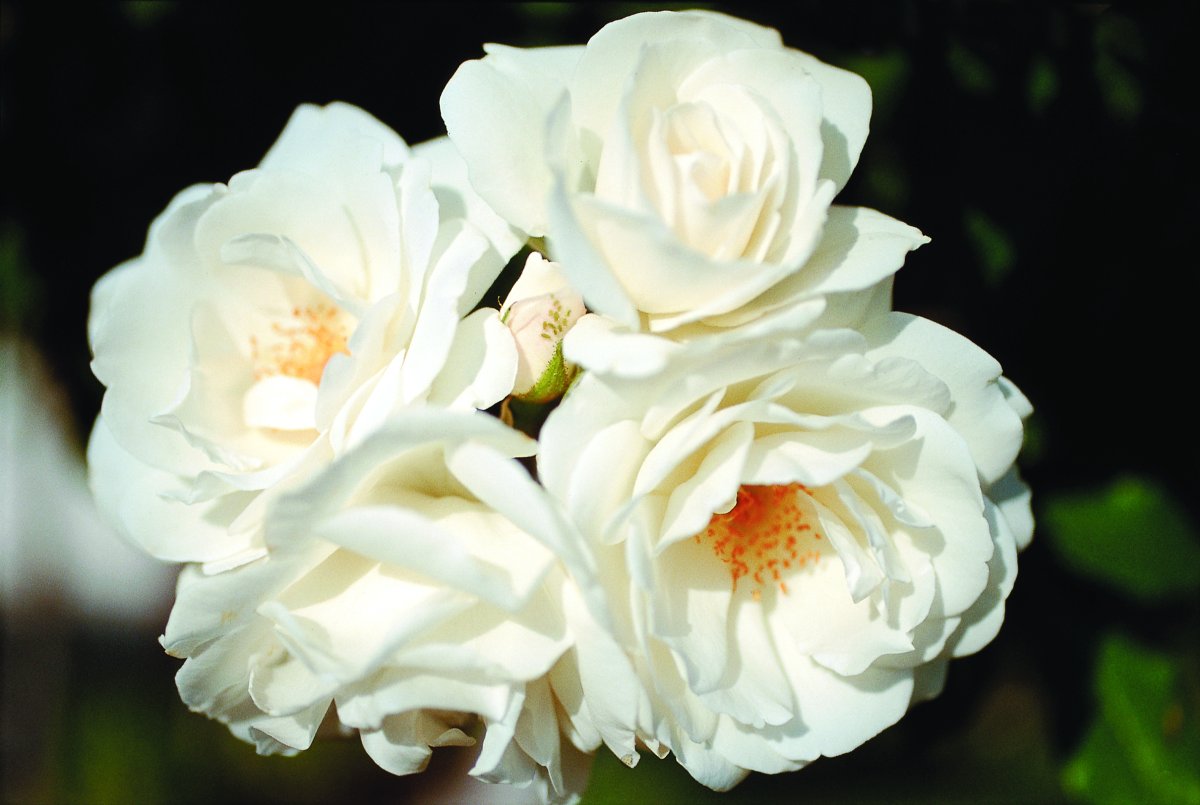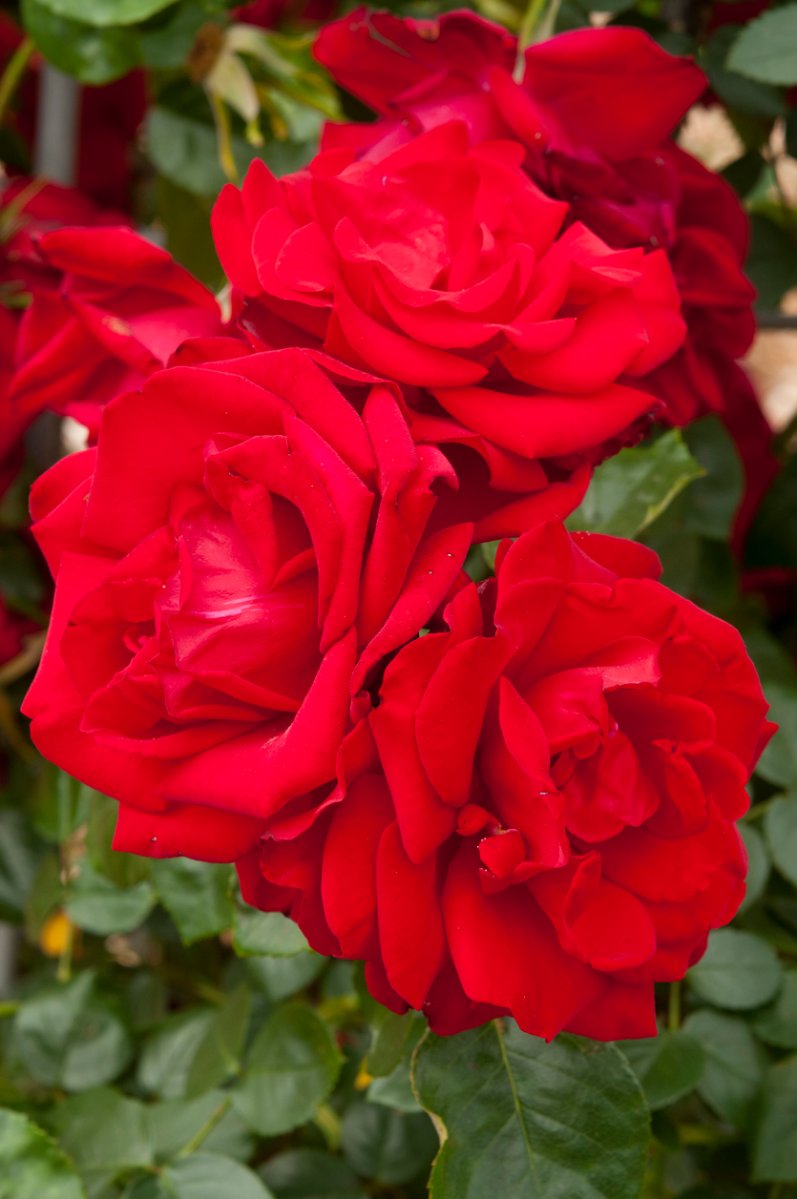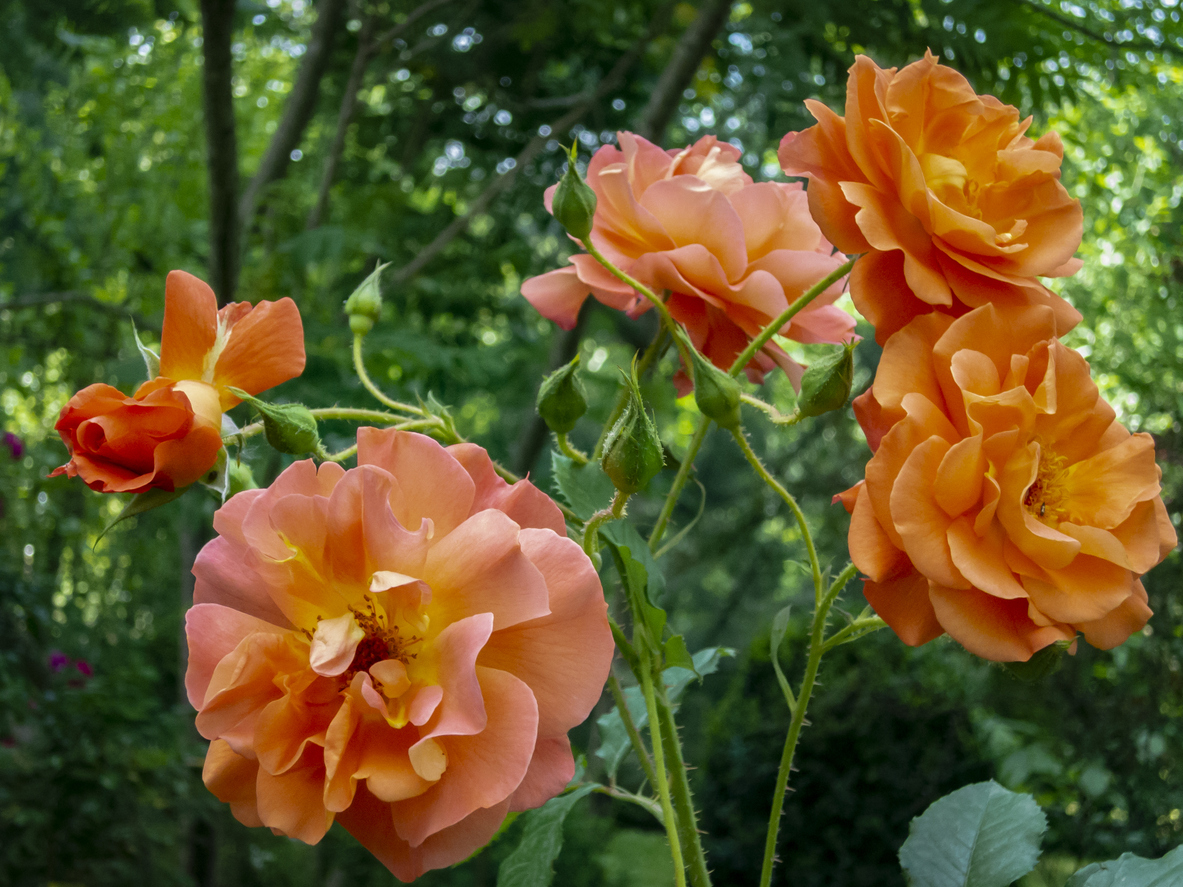We may earn revenue from the products available on this page and participate in affiliate programs. Learn More ›
Climbing roses serve a functional purpose while adding color, texture, and beauty to a landscape. Most types of rose bushes grow like shrubs, but these climbers can be trained to screen for privacy, frame a doorway, grow up a rose trellis, or even cover an arbor to increase shade.
There are numerous types of roses that climb and ramble, and they come in a wide variety of colors and fragrances. Ahead, we’ve rounded up some of the best climbing roses that will make stunning additions to your outdoor space.
Tips for Growing Climbing Roses
Climbing roses can transform a plain-looking wall, fence, or a climbing rose trellis into a colorful display of showy flowers and beautiful greenery. Keep these tips in mind to help your climbing roses thrive.
- Planting site: Most climbing roses prefer full sun and well-draining soil, but some roses tolerate partial shade. For best results, plant these roses as bare-root plants in late winter or early spring once you can work the ground.
- Watering: It’s best to water roses at their base since watering overhead can lead to diseases.
- Fertilizing: Fertilize climbing roses regularly in spring after pruning with a balanced fertilizer according to package directions.
- Training: Climbing roses don’t have tendrils to support themselves, so you’ll need to train the rose vine to climb by using twine to loosely tie their canes to the structure you want to cover. But keep in mind that horizontal canes might provide more blooms, so take care to train them both vertically and horizontally so they can reach their full potential.
- Pruning: Typically, you can skip pruning climbing roses for the first 2 years. After that, prune the roses in late winter or early spring while they still are dormant, though some are best pruned after their bloom cycle is complete. Remove any dead wood and trim back the side shoots to about 2 to 3 inches from the main stem.
RELATED: 15 Beautiful and Functional Trellis Ideas for Climbing Plants
1. Cecile Brunner (Rosa ‘Cecile Brunner’)

Cecile Brunner is an award-winning climbing rose that grows vigorously and features generous sprays of fragrant, fully double, pale pink flowers. The climbing rose is almost thornless, and blooms can reach up to 1.5 inches across. This climbing rose boasts a long blooming season that starts in late spring or early summer and continues until early fall. Cecile Brunner grows up to 12 feet tall with up to a 6-foot spread. This rose thrives in zones 4 to 11 and prefers full sun.
2. Eden Climber (Rosa ‘Eden’)
This old-fashioned repeat-blooming rose features large, fully double, cupped blooms in an unusual blend of pastel pinks, creams, and yellows. It’s a climber with plenty of foliage, excellent disease resistance, and a light fragrance. Eden Climber grows up to 10 feet high with a 6-foot wide spread. This rose is suitable for zones 5 through 11 and does best in full sun, but tolerates some shade.
3. Iceberg (Rosa ‘Iceberg’)

Iceberg climbing rose is a sport of the popular Iceberg shrub rose that grows as a white climbing rose. It features rounded and double flowers with soft white petals and a mild fragrance. The rapidly growing climbing rose produces abundant medium-size flowers that bloom continuously from late spring through the first frost. Its disease resistance improves when grown in full sun with adequate air circulation. Icebergs grow up to 15 feet tall. These roses grow in zones 5 to 11 and need a minimum of 6 hours of direct sunlight daily to thrive.
4. Mary Delany (Rosa ‘Mary Delany’)
Mary Delany is a versatile rose that gardeners can use as a short climber or a tall shrub. It features attractive dark green leaves and few thorns. The rose flowers have delicate cup-shaped, double flowers with soft pink hues. This David Austin climbing rose grows up to 12 feet with a 4-foot wide spread. It can thrive in full sun and partial shade, and grows in zones 4 through 9.
5. Lady of Shalott (Rosa ‘Lady of Shalott’)

The Lady of Shalott features repeat blooming apricot chalice-shaped flowers with a light tea fragrance. The blooms contrast beautifully with a mix of red-bronze foliage that matures to a lovely green. The climber grows up to 8 feet tall and features a bushy growth habit, but the stems love to climb. It blooms continuously from late spring until frost and has excellent disease resistance. This spectacular climber thrives in full sun in zones 4 through 11.
6. Arborose Tangerine Skies (Rosa x ‘Kortangenu’ PP30, 588)
These lovely climbers feature blooms with a unique, peachy mango blend that contrasts beautifully with their glossy, dark green foliage, a stunning combination on arbors. The rose features classically shaped buds with an abundant fragrance. Tangerine Skies is incredibly resistant to common diseases and grows up to 8 feet high with a 4-foot wide spread. These roses grow in zones 5 to 10 and need full sun.
7. Don Juan (Rosa ‘Don Juan’)

If you have your heart set on a classic red rose, Don Juan won’t disappoint. The rose features rich red, double-bloom, and sweetly fragranced flowers that look stunning against its glossy dark green foliage. The prodigious climber is a repeat bloomer and shows its best color in climates with warmer nights. Don Juan grows up to 10 feet tall with a 5-foot-wide spread. Plant this rose in zones 5 to 9 with full sun.
RELATED: Great Entrances: 10 Welcoming Garden Gates
8. Raspberry Cream Twirl (Rosa ‘Raspberry Cream Twirl’)
This fun climber features full, cup-like blooms that display a fun mix of deep pink with white stripes. Raspberry Cream Twirl has a light apple fragrance, making this climber smell as fun as it looks. The rose also features glossy, dark green foliage that makes the blooms pop. It is nearly thornless and has excellent disease resistance. Raspberry Cream Twirl grows up to 12 feet tall with a 5-foot wide spread. These fun blooms thrive in full sun in zones 5 through 10.
RELATED: Edible Flowers: 15 Beautiful Blooms That Are Also Delicious
9. Dublin Bay (Rosa ‘MACdub’)

Dublin Bay roses feature vibrant red blooms and dark green glossy leaves that make for a stunning addition to your fence or trellis. They can also be grown as pillar roses. The gorgeous double blooms put on a long show, beginning in late spring and continuing to bloom until the first frost hits. They usually grow up to 12 feet tall and do best in full sun in zones 5 through 9.
10. Albertine Rambling Rose (Rosa ‘Albertine’)
Albertine rambling roses can grow up to 15 feet tall and 12 feet wide, with arching canes that help this pink climbing rose spread. It has a strong fruity fragrance, and the double flowers happen to be edible, so you can use them to decorate your favorite salads. These beauties prefer full sun and thrive in zones 5 to 9.
11. Westerland (Rosa ‘Korwest’)

Westerland roses are beloved for their strong, sweet and citrusy fragrance and large clusters of orange double blooms. This climbing rose grows up to 8 feet tall. It begins blooming in late spring and will continue until early fall. Deadheading spent blooms will increase this plant’s flower production. This rose is hardy in zones 5 to 9 and thrives in full sun with well-draining soil.
12. Golden Showers (Rosa ‘Golden Showers’)
This large climbing rose boasts nearly thornless stems and large, sweet-smelling yellow flowers that will bloom continuously from mid-summer to early fall. Golden Showers roses are also highly disease-resistant and relatively low maintenance. Use it to cover a sunny wall or trellis, or prune it back to grow as a shrub. Either way, plant it in full sun in zones 5 through 9 to keep it happy.


